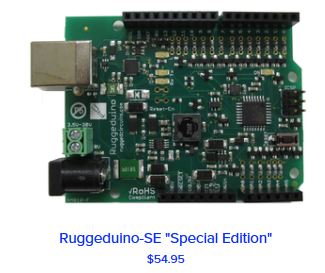no one really spelled out the similarities
the UNO is based on a DIP chip and have 6 analog inputs.
the Nano and Mini use the SMT chip and the only difference is they offer 8 analog inputs.
other than that, the power, the memory etc, is the same.
the pro-mini [ edit : pro-MICRO ] uses an internal USB interface a'la the Leonardo and offers 12 analog inputs. but. you lose digital ones.
not really lose, they are an either/or option. a note here is that the analog on any unit can act like a digital.
the ruggeduino is an UNO with a kevlar jacket. 'most' simple mistakes in wiring are protected against.
there are a slew of tiny Arduinos, the Digispark, the Trinket, etc. all have small forms and reduced pin counts. [ and reduced memory ]
the EXSP8266 is the odd one. with only 1 analog and a handful of digital pins with varying requirements. strictly a 3.3 v device. this is odd, it does Wi-Fi but also has a few pins, lots of memory and is available in an UNO form factor to use shields. it plays so well with any Arduino, that it is both a replacement and accessory, depending on your needs.
There are a few variations of the Teensy, based on a a Cortex processor, it runs at a different clock speed, has lots more memory. 12 bit analog out, 16 bit analog in, depending if you can connect to pads, not pins, you can get lots more analog inputs. odd, VERY odd, pad placement makes it hard to use.
Once you open pandora's box of alternate CPU's, there is a vast array of options. too many to cover and changing so fast.. op's another was just released... that it would be impossible to keep up....
not mentioned in any posts so far is the Mega, not many clones for that. more memory and more pins
but there is a third board/chip in the ATMEL family, the 1284
http://www.crossroadsfencing.com/BobuinoRev17/
this uses nearly the same programming but offers more memory, more pins and fits nicely between the UNO and MEGA in the same form factor that allows use of shields. many of us feel that this should have been the root chip to start this whole revolution. not too big, not too small..... alas, Bob did not pick a great name. no professor wants to tell the students to pull out their bobweeny.....
I like to use the UNO for testing. using shields is just to easy.
I like the NANO because I use the screw terminal board for it.
http://www.ebay.com/itm/321999039619
this offers me options for my uses.
a note on the mini. there is no duplication. the pins or the extra analog are either over here, or over there, in line or stacked.... I2C pins are not bread board compatible, they are lined up between the normal pins. if you make a custom board, better order all the mini's before you order boards. every seller from China changes with each new lot of boards.
the Mini was originally based on the BasicStamp, the over priced, delicate student board that thrived until C pricing was brought under control and made simply by the Arduino. the pins are laid out to replicate the BasicStamp.

